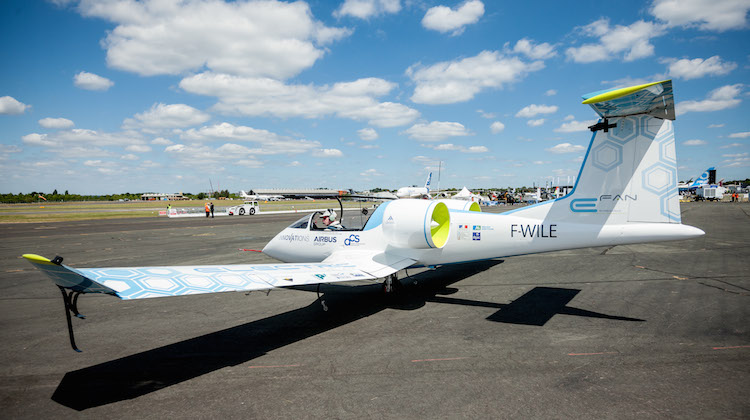
Airbus Group says it will shortly commence construction on a final assembly line (FAL) in Southwest France to build its all-electric E-Fan 2.0 aircraft.
The initial two-seater E-Fan 2.0 would be designed for initial pilot training and is due to enter service by the end of 2017 or in early 2018, Airbus Group said in a statement on April 30.
The E-Fan project was launched in 2012, and shown to the world at the 2013 Paris Airshow. The E-Fan 1.0 demonstrator aircraft took its first flight in the first half of 2014 and has racked up more than 38 flight hours from 78 test flights since, the company said.
The E-Fan has two electric motors, which are powered by 250 Volt lithium-ion polymer batteries located in the wings, where fuel tanks would normally be. The batteries provide enough power for about 45 minutes of flying. Its cruising speed is about 160km/h, with a maximum speed of about 200km/h.
“We have reached the next milestone in our Airbus Group E-Aircraft roadmap,” Airbus Group chief technology officer Jean Botti said.
“The industrialisation of our E-Fan aircraft will help us to advance electric flight and also to gain experience to scale up the technology.
The FAL will be based at Pau, in the Aquitaine region of France.
Airbus Group said it would invest 20 million euros in the design and development of the E-Fan 2.0, with more money to be tipped in from partners in the project.
Airbus Group said Pau was an established regional centre for aeronautics, had a medium-sized airport and good weather conditions.
Construction of the FAL was due to begin by the middle of 2016.
“With this new assembly line, Airbus Group is preparing for the future and creating new jobs and business in the Aquitaine region.”
In addition to the two-seater E-Fan 2.0, a larger four-seater E-Fan 4.0 and eventual 90-seat regional jet are also on the cards, with Voltair SAS, a wholly-owned Airbus Group company, to develop, build and offer services for the program.
















Chris
says:With a Range of 120km I hope it performs well as a glider until the battery technology improves . Note the single landing wheel and two casters and outrigger scrapes.
GAGA
says:It would presumably offer significant savings on ab-initio and circuit training but they don’t make any mention of running costs even in other more detailed publications.
Apparently it does have a extra 15 minutes of reserve power in addition to the 45 minutes and taxing is done by a separate motor inside the single main wheel so taxing doesn’t effect the operating time/range.
Adrian
says:I rather fancy a BN Trislander as an hybrid aircraft, with an APU on the tail and an electric motor on each wing replacing the traditional engines. Solar panels on the wings and flat cabin top to provide some free energy and when the aircraft has landed allow the propellers to windmill (slowing the aircraft down) and charge the batteries (KERS). Also when parked up on the apron, batteries charged, plug into grid for extra revenue from the solar panels..